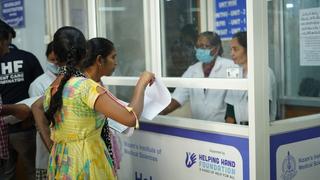
In a boost to maternal healthcare among Hyderabad’s underserved communities, over 3,000 pregnant women received free antenatal care between August and December 2024 through a community health initiative led by city-based NGO Helping Hand Foundation (HHF).
| Photo Credit: Special Arrangement
In a boost to maternal healthcare among Hyderabad’s underserved communities, over 3,000 pregnant women received free antenatal care between August and December 2024 through a community health initiative led by city-based NGO Helping Hand Foundation (HHF).
The NGO’s network of 12 primary health centres, spread across more than 90 low-income urban settlements on the city’s western and southern fringes, saw the registration of 3,075 antenatal cases during the five-month period.
Operating in densely populated migrant labour zones, HHF deployed trained maternal health counsellors, one for every 250 pregnant women to provide trimester-wise guidance, health monitoring, and awareness on doctor visits, diagnostic tests, nutrition, and hygiene. The initiative aimed not just to ensure safer pregnancies, but also to systematically refer women to government hospitals for deliveries, reducing dependence on costly private care.
“Our counsellors played a pivotal role in convincing families to opt for government hospitals. With our strong referral network and trained volunteers placed at maternity hospitals, we could ensure smooth transitions for women throughout their pregnancy,” said Mujtaba Hasan Askari, founder of Helping Hand Foundation.
As a result, 72% of the 432 deliveries during the period took place at government hospitals at zero cost to the families, saving an estimated ₹1 crore in out-of-pocket expenses. Of the total 431 births recorded, 68% were normal deliveries and 32% C-sections.
The health data offers a mixed picture, while 45% of women were found to be anaemic in their initial trimesters, most cases were managed through dietary support and medication. Around 15% had pregnancy-induced anaemia and 21% were diagnosed with gestational diabetes.
“Despite the challenges, we recorded a 99% live birth rate with just three intrauterine deaths. No neonatal complications were reported, which is a testament to the quality of care and vigilance offered throughout the pregnancy,” said Dr. Amina Afshan, Chief Medical Officer at HHF’s Pahadi Sharif health centre. Of the babies born, 54% were male and 46% female.
Published – May 04, 2025 07:02 pm IST













Leave a Reply